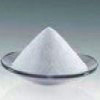| We are manufacturers of Phenylmercuric Acetate and Pharmaceutical Excipients in India. We offer Halal and Kosher product made in an ISO9001, ISO22000 (FSSC22000) cGMP and GLP certified facility. The units have one or more of the certifications like FDA GMP-GLP, ISO 9001, ISO 22000, HACCP, REACH, Kosher & Halal |




Phenylmercuric Acetate USP NF BP Ph Eur Reagent Grade Manufacturers
CAS Number: 62-38-4, EINECS EC Number: 200-532-5, Molecular Formula: C8H8HgO2, Molecular Weight: 336.74

SDS of Phenylmercuric Acetate Manufacturers Suppliers
Phenylmercuric Acetate USP NF
C8H8HgO2 336.74
Mercury, (acetato-O)phenyl-.
(Acetato)phenylmercury [62-38-4].
Phenylmercuric Acetate contains not less than 98.0 percent and not more than 100.5 percent of C8H8HgO2.
Identification:
A: Add 0.5 mL of nitric acid to 0.1 g of it, warm gently until a dark brown color is produced, and dilute with water to 10 mL: the characteristic odor of nitrobenzene is evolved.
B: To 0.1 g of it add 0.5 mL of sulfuric acid and 1 mL of alcohol, and warm: the characteristic odor of ethyl acetate is evolved.
C: To 5 mL of a saturated solution in water add a few drops of sodium sulfide: a white precipitate is formed, which turns black when the mixture is boiled and then allowed to stand.
Melting range: between 149 and 153 .
Residue on ignition: not more than 0.2%.
Mercuric salts and Heavy metals: Heat about 100 mg with 15 mL of water, cool, and filter. To the filtrate add a few drops of sodium sulfide: the resulting precipitate shows no immediate color.
Polymercurated benzene compounds: Shake 2.0 g with 100 mL of acetone, and filter. Wash the residue with successive portions of acetone until a total of 50 mL is used, then dry the residue at 105C for 1 hour, and weigh: the weight of the residue does not exceed 30 mg (1.5%).
Phenylmercuric Acetate BP
Ph Eur
C8H8HgO2 --- 336.7 --- 62-38-4
Action and use: Antiseptic, antimicrobial preservative.
DEFINITION
Content: 98.0 per cent to 100.5 per cent (dried substance).
CHARACTERS
Appearance: White or yellowish, crystalline powder or small, colourless crystals.
Solubility: Slightly soluble in water, soluble in acetone and in alcohol.
IDENTIFICATION
First identification A.
Second identification B, C.
A. Infrared absorption spectrophotometry.
B. To 5 ml of solution S (see Tests) add 5 ml of water and 0.1 ml of sodium sulphide solution. A white precipitate is formed that darkens slowly on heating.
C. To 10 ml of solution S add 2 ml of potassium iodide solution and shake vigorously. Filter. The filtrate gives reaction (b) of acetates.
TESTS
Solution S: Dissolve 0.250 g in 40 ml of water by heating to boiling. Allow to cool and dilute to 50 ml with water. Prepare the solution immediately before use.
Appearance of solution: Solution S is not more opalescent than reference suspension and is colourless.
Ionised mercury: Maximum 0.2 per cent.
Polymercuric benzene compounds: Maximum 1.5 per cent.
Loss on drying: Maximum 0.5 per cent, determined on 0.500 g by drying in an oven at 45C for 15 h.
ASSAY
Dissolve with heating 0.300 g in 100 ml of water. Cool and add 3 ml of nitric acid. Titrate with 0.1 M ammonium thiocyanate using 2 ml of ferric ammonium sulphate solution as indicator, until a persistent reddish-yellow colour is obtained. 1 ml of 0.1 M ammonium thiocyanate is equivalent to 33.67 mg of phenylmercuric acetate.
Manufacturers Suppliers Exporters
Anmol Chemicals
S-8, SARIFA MANSION, 2ND FLANK ROAD, CHINCHBUNDER, MUMBAI 400009, INDIA
TEL: (OFFICE) 91-22-23770100, 23726950, 23774610, 23723564. FAX: 91-22-23728264
e-mail: anmolc@mtnl.net.in

Exports to USA, Canada, UAE, Dubai, South Africa, Tanzania, Kenya, Nigeria, Egypt, Uganda, Turkey, Mexico, Brazil, Chile, Argentina, Europe Netherlands, Italy, Spain, Germany, Portugal, France, Malaysia, Indonesia, Thailand, Vietnam, Korea, Japan, etc.
Copyright and Usual Disclaimer is Applicable. 19 January, 2022